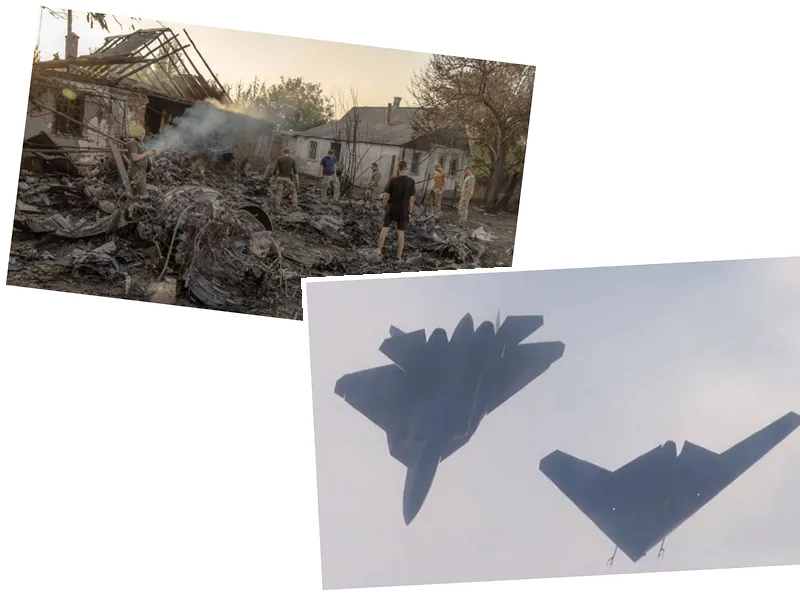The ongoing Russian-Ukrainian war is significantly impacting Russia's military capabilities, particularly in developing advanced weaponry like the PAK DA stealth bomber. Despite initial doubts about Russia's ability to produce such a strategic bomber, recent reports indicate that Moscow is progressing with its PAK DA program, which aims to create a sixth-generation stealth bomber designed to compete with American counterparts like the B-21 Raider. The PAK DA is expected to enter production in 2027, but economic strains and military focus due to the ongoing conflict may hinder its development timeline.
The PAK DA bomber, which has been in development since the late 1990s, is designed to carry nuclear and conventional munitions with a payload capacity of 30 tons and a range of up to 12,000 kilometers. Its design draws inspiration from the American B-2 Spirit bomber, emphasizing stealth and advanced technology. However, the program faces skepticism regarding its feasibility, with experts questioning whether Russia can produce more than one prototype due to financial constraints and logistical challenges. The looming presence of China's H-20 stealth bomber adds further pressure on Russia to expedite its military advancements.
As the U.S. continues to develop its B-21 Raider bomber, which is expected to enter service soon, the competition in the strategic bomber domain intensifies. The PAK DA's potential to carry a heavier payload is offset by concerns regarding its performance and vulnerability to modern air defenses. While the U.S. is actively funding and producing its bombers, Russia's ability to keep pace remains uncertain, raising questions about the future of air dominance in the face of evolving global military capabilities.
- The PAK DA's development is a response to the changing dynamics of global military power, particularly as the U.S. and China enhance their aerial capabilities. The PAK DA's design features, such as a reduced radar cross-section and advanced electronic warfare systems, aim to ensure its effectiveness in penetrating enemy defenses. However, the project's historical context, starting from the 1990s and officially announced in 2019, highlights the challenges Russia faces in modernizing its military infrastructure.
- The geopolitical landscape also plays a crucial role in the development of military technology. As Russia contends with sanctions and economic pressures stemming from its ongoing conflict with Ukraine, the ability to finance and produce advanced military equipment like the PAK DA becomes increasingly precarious. The competition with China's H-20 bomber further complicates Russia's strategic position, as it must not only catch up with U.S. advancements but also contend with emerging threats from Beijing.






